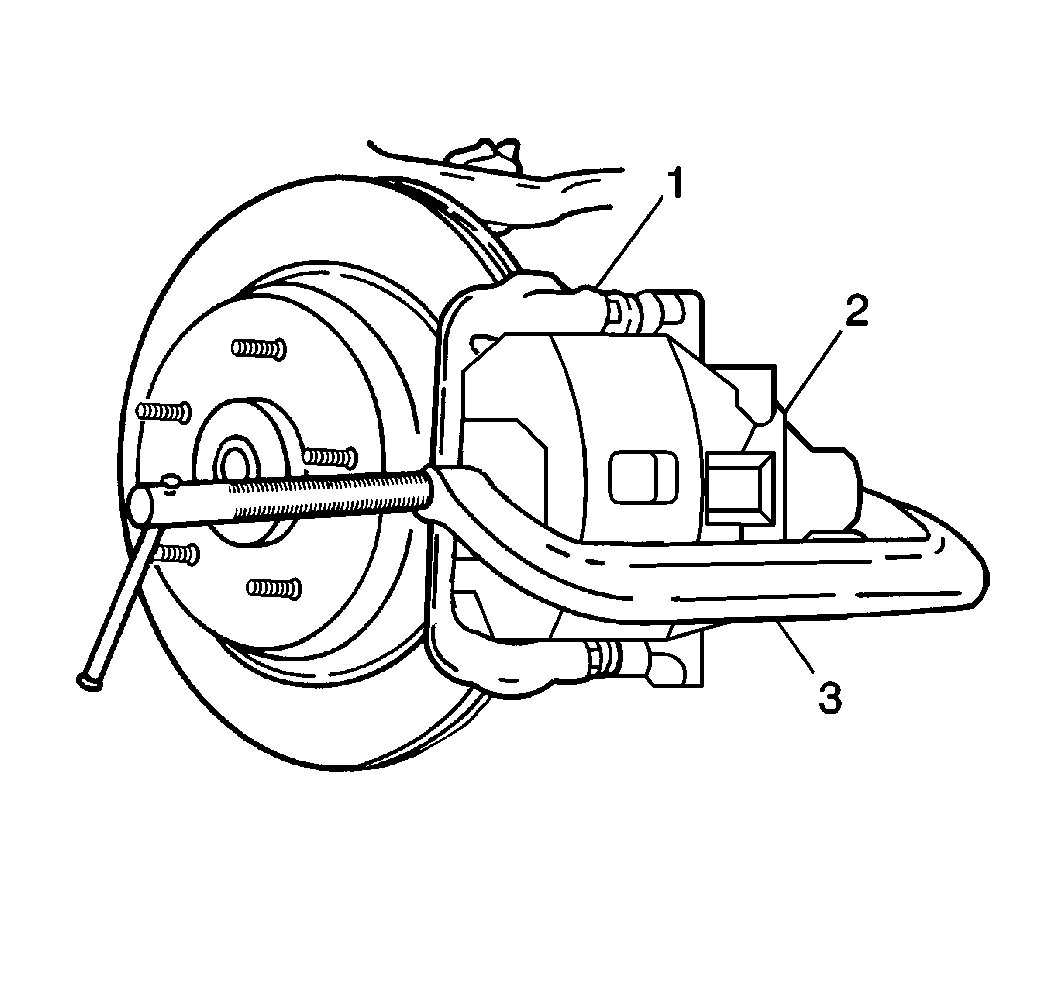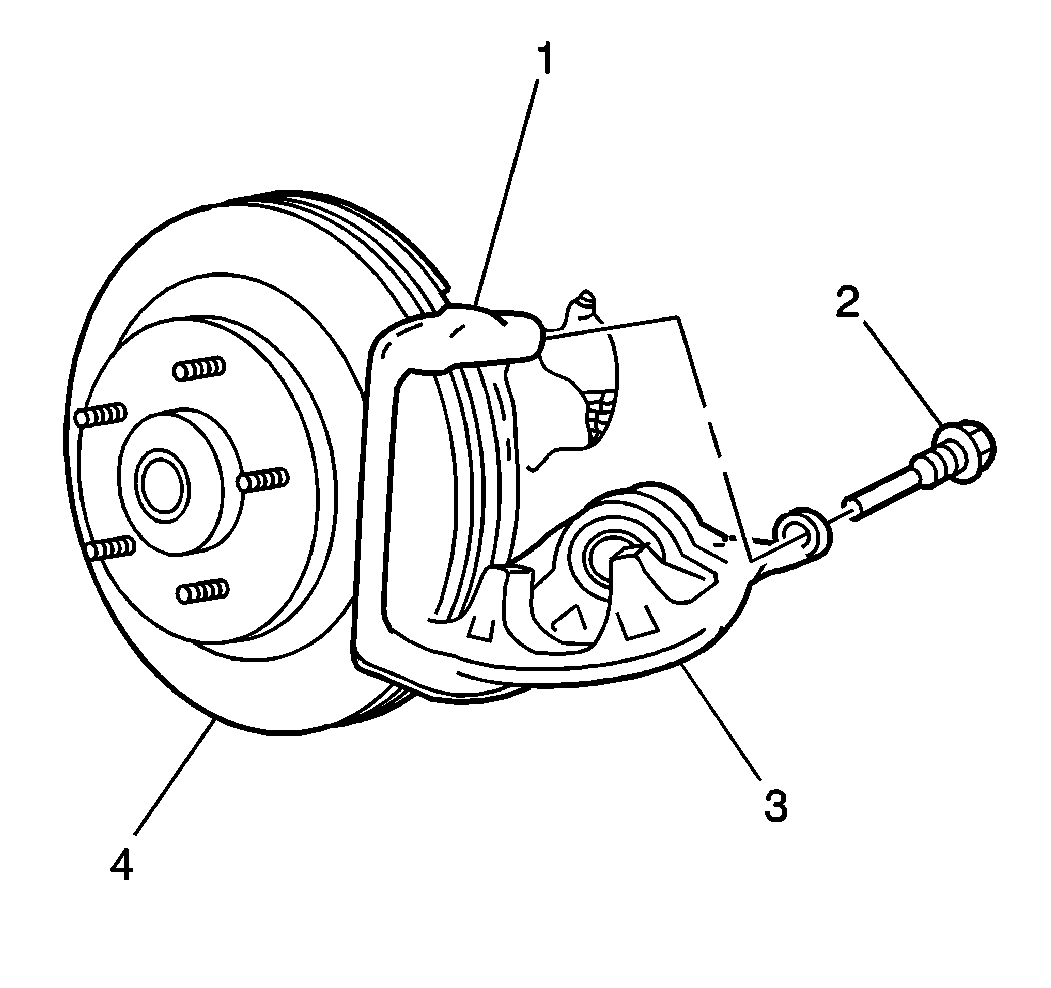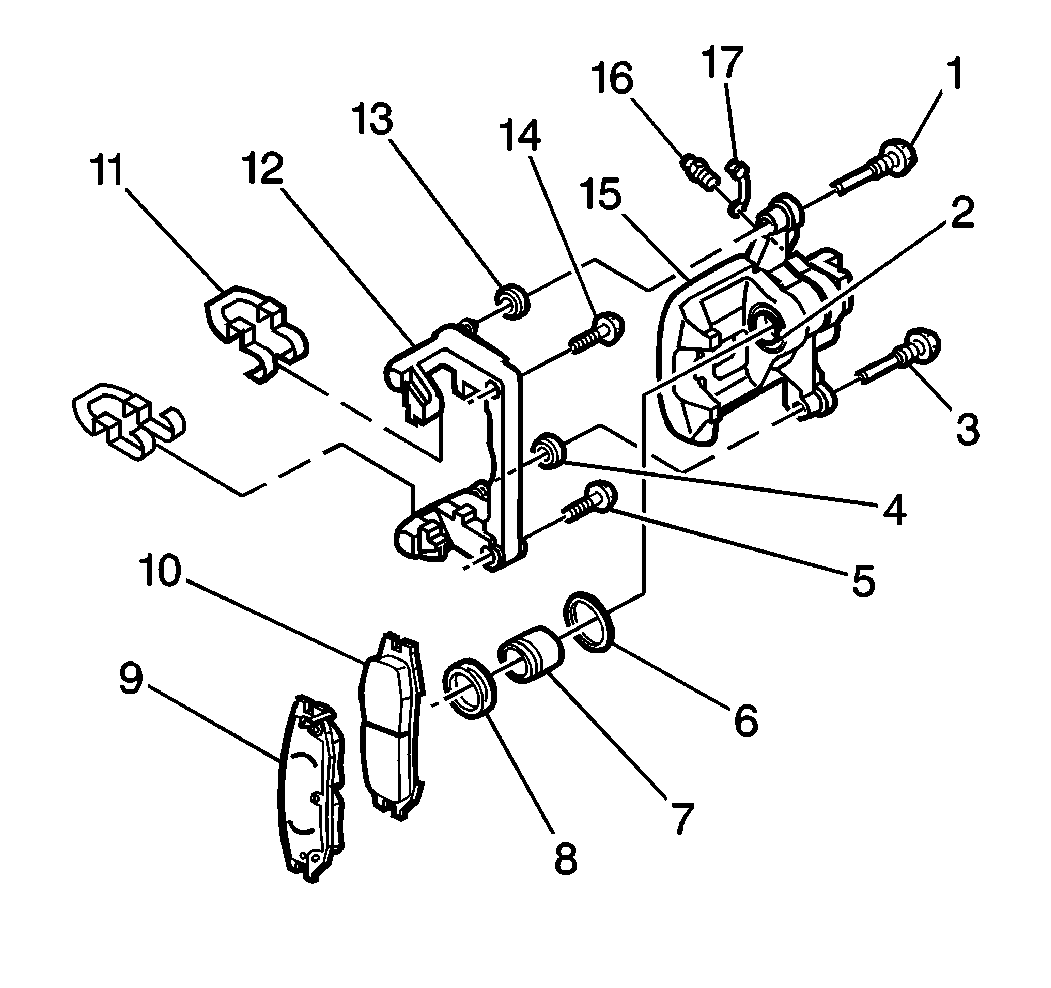Removal Procedure
Caution: Do not move the vehicle until a firm brake pedal is obtained. Failure to obtain a firm pedal before moving vehicle may result in personal injury.
- Remove one-third of the brake fluid from the master cylinder.
- Raise and suitably support the vehicle. Refer to Lifting and Jacking the Vehicle in General Information.
- Mark the relationship of the wheel to the axle flange.
- Remove the tire and the wheel. Refer to Tire and Wheel Removal and Installation in Tires and Wheels.
- Compress the caliper piston enough for clearance. Use a C-clamp (3).
- Remove the upper caliper bolt (2).
- Pivot the caliper body down in order to access the pads. Do not remove the caliper body.
- Remove the brake pads (9) from the caliper bracket (12).
- Remove the two pad clips (11) from the caliper bracket.
- Inspect the caliper bracket boots (13) for the following conditions:
- Inspect the piston boot (8) for the following conditions:
- Inspect the caliper bolts (1) for corrosion or damage. If corrosion exists, use new components (including bushings) when installing the caliper. Do not attempt to polish away the corrosion.
Install two wheel nuts to retain the rotor.



| • | Cuts |
| • | Tears |
| • | Deterioration |
| • | Replace the bracket boots (13) if damage exists. Refer to Rear Brake Caliper Replacement . |
| • | Cuts |
| • | Tears |
| • | Deterioration |
| • | Replace the piston boot if damage exists. Refer to Rear Brake Caliper Overhaul . |
Installation Procedure
Important: Before installing new brake pads, wipe the outside surface of the caliper boot clean. Use denatured alcohol.
- Bottom the piston (7) into the caliper bore (2).
- Install the two retainers (11) to the caliper bracket (12).
- Install the pads (9 and 10) to the caliper bracket (12).
- Swing the caliper (3) upward in position around the pads.
- Lubricate the bolt (2) and the bolt boot. Use silicone grease.
- Install the upper caliper bolt (2).
- Remove the wheel nuts securing the rotor (4) to the hub and bearing.
- Install the tires and the wheels. Refer to Tire and Wheel Removal and Installation in Tires and Wheels.
- Lower the vehicle.
- Fill the master cylinder to the proper level with clean brake fluid. Refer to Master Cylinder Reservoir Filling in Hydralic Brakes.
- Apply approximately 778 N (175 lb) of force three times to the brake pedal in order to seat the pads against the rotor.
- Burnish the pads and the rotors. Refer to Brake Pad and Rotor Burnishing .

Use a C-clamp when installing new brake pads in order to clamp the piston at the same time. Use a metal plate or wooden block across the face of the piston. Do not damage the piston or the caliper boot.
Important: Lift the inner edge caliper boot (4) next to the piston (7). Press out any trapped air. The boot must lay flat below the level of the piston face.
Important: The wear sensor is on the outside shoe. The sensor is positioned at the trailing edge (downward) of the pad during forward wheel rotation.

Notice: Use care to avoid damaging pin boot when rotating caliper.
Notice: Use the correct fastener in the correct location. Replacement fasteners must be the correct part number for that application. Fasteners requiring replacement or fasteners requiring the use of thread locking compound or sealant are identified in the service procedure. Do not use paints, lubricants, or corrosion inhibitors on fasteners or fastener joint surfaces unless specified. These coatings affect fastener torque and joint clamping force and may damage the fastener. Use the correct tightening sequence and specifications when installing fasteners in order to avoid damage to parts and systems.
Tighten
Tighten the caliper bolt to 43 N·m (32 lb ft).
Align the previous marks on the wheel, hub and bearing.
